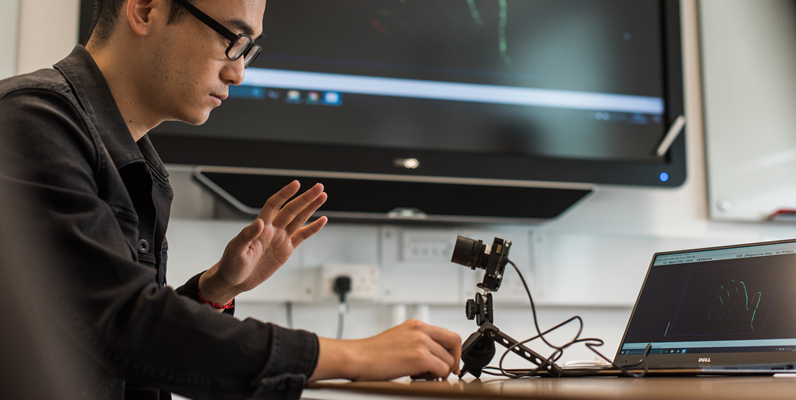The Internet of Silicon Retinas (IoSiRe)
This page has been archived and will no longer be updated.

1 July 2017
Using neuromorphic vision sensing technologies to decrease latency and power consumption in visual internet-of-things networks.
Project website http://gtr.rcuk.ac.uk/
Description
This proposal starts with the notion that, when considering future visual sensing technologies for next-generation Internet-of-Things surveillance, drone technology, and robotics, it is quickly becoming evident that sampling and processing raw pixels is going to be extremely inefficient in terms of energy consumption and reaction times. After all, the most efficient visual computing systems we know, i.e., biological vision and perception in mammals, do not use pixels and frame-based sampling. Therefore, IOSIRE argues that we need to explore the feasibility of advanced machine-to-machine (M2M) communications systems that directly capture, compress and transmit neuromorphically-sampled visual information to cloud computing services in order to produce content classification or retrieval results with extremely low power and low latency.
IOSIRE aims to build on recently-devised hardware for neuromorphic sensing, a.k.a. dynamic vision sensors (DVS) or silicon retinas. Unlike conventional global-shutter (frame) based sensors, DVS cameras capture the on/off triggering corresponding to changes of reflectance in the observed scene. Remarkably, DVS cameras achieve this with (i) 10-fold reduction in power consumption (10-20 mW of power consumption instead of hundreds of milliwatts) and (ii) 100-fold increase in speed (e.g., when the events are rendered as video frames, 700-2000 frames per second can be achieved).
In more detail, the IOSIRE project proposes a fundamentally new paradigm where the DVS sensing and processing produces a layered representation that can be used locally to derive actionable responses via edge processing, but select parts can also be transmitted to a server in the cloud in order to derive advanced analytics and services. The classes of services considered by IOSIRE require a scalable and hierarchical representation for multipurpose usage of DVS data, rather than a fixed representation suitable for an individual application (such as motion analysis or object detection). Indeed, this is the radical difference of IOSIRE from existing DVS approaches: instead of constraining applications to on-board processing, we propose layered data representations and adaptive M2M transmission frameworks for DVS data representations, which are mapped to each application's quality metrics, response times, and energy consumption limits, and will enable a wide range of services by selectively offloading the data to the cloud. The targeted breakthrough by IOSIRE is to provide a framework with extreme scalability: in comparison to conventional designs for visual data processing and transmission over M2M networks, and under comparable reconstruction, recognition or retrieval accuracy in applications, up to 100-fold decrease in energy consumption (and associated delay in transmission/reaction time) will be pursued. Such ground-breaking boosting of performance will be pursued via proof-of-concept designs and will influence the design of future commercial systems.
Outputs
- Publications
- None currently linked
 Close
Close

